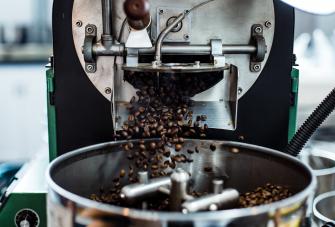How to Manage Bar Inventory
Look at the shelf behind any bar, and you will see an array of bottles in every shape and size. With so many half-opened bottles, how could you begin tracking how much liquor is left in each bottle?
There are various methods on how to manage bar inventory, so let’s review how to take stock manually and with an automated system.
What is bar inventory?
Inventory includes everything visible from the bar counter and items in storage, such as kegs, pretzels, and cases of alcohol. A typical bar owner needs to keep track of the following products:
- Liquor
- Soft drinks
- Food
- Garnishes
- Supplies
Why is inventory management needed for bars?
Smart bar inventory management is the key to keeping your business afloat. Even if your bar is packed every night, underlying issues could create significant problems and cut into your profit.
Prevent overstocking/understocking
By failing to track inventory, you can’t calculate your average sales volumes during the week. Without this information, you won’t know how many cases of beer or bottles of liquor to order from your suppliers.
If you are understocking your bar, you could run out of your favorite products on busy nights. The lost sales could severely impact your business, preventing you from expanding, or causing you to close altogether.
If you are overstocking, your storage costs could be cutting into your revenue. As unsold inventory sits in your stock room, you have reduced cash flow, more wastage, and less room to hold in-demand products.
Catching theft and shrinkage
Shrinkage often occurs at businesses that fail to keep track of their inventory. When storage rooms are unorganized or full of unused inventory, it is nearly impossible to know if items are lost or stolen. Employees will take advantage of this situation, sneaking bags of pretzels or cans of their favorite drink.
When you actively manage your bar inventory, you show your staff that all items are accounted for at all times.
Also, you can never be certain which items are selling best.
Consider this: Imagine your bar runs out of a bottle of well vodka quickly faster than other drinks. It is apparent that more patrons ordered that drink than others, correctly?
Well, not exactly. A friendly bartender could be offering free drinks to their friends or overpouring. If this is the case, you are actually losing money on each pour, and restocking that vodka only continues this trend.
Calculating costs and prices
How do you price your drinks? Just because the bar next door sells a bottle of beer for $3 doesn’t mean that it is the ideal price for your business. Instead, each drink needs to be priced based on your cost basis.
With proper bar inventory management, you can see your average sales volumes and find suitable profit margins that ensure your success.
The problem of manual bar inventory management
Taking stock at your bar can take some time, especially when you need to deal with an extensive inventory.
To start, you will need to create a bar inventory spreadsheet to track:
- Stock levels
- Brands
- Types of alcohol
- Product names
- Sizes
Next, you will need to set time aside to count each item at the bar and in storage. Part of this count includes keeping tracking of how much liquid is in each container, which means guessing how many servings are left.
After writing down all your numbers, you will need to have some math skills to apply the following formula:
Starting inventory + added inventory - ending inventory
This formula will give you your inventory usage. This is the amount of inventory you used between your last stock take, be it daily, weekly, or monthly.
Usage helps you track how much each drink costs to pour. You can divide usage by the total number of drinks sold to see how much the average drink costs your business.
Usage / total drinks served = average pour cost
This process can take several hours, which means higher operating costs. Manually counting each item also allows more room for error. If a staff member makes a mistake or slacks on the job, your inventory count will be off and you will end up ordering the wrong amount of products.
How to Manage Bar Inventory with a POS
Your bar point of sale system will simplify this process, saving you time and money. Since the POS records all transactions and inventory, you get real-time stock levels at all times. Your inventory management software can even track how many milliliters are left in a bottle, taking the guesswork out of the process.
Here’s how to manage your bar inventory with the Epos Now Bar POS:
- Open the Menu
- Go to Stock
- Click Stocktake
- Review the systems Expected Stock and Actual Stock to address discrepancies
- Complete your Stocktake
This automated system will help you ensure that all items are accounted for and shows you how much stock should be remaining after a long night. If the numbers don’t add up, you can quickly investigate the matter and address the theft, loss, or other issues.
Also, your Epos Now system can automatically submit purchase orders when levels run low.
Epos Now can do much more than simplify your bar inventory management process. Speak with a consultant to learn more about our system.




